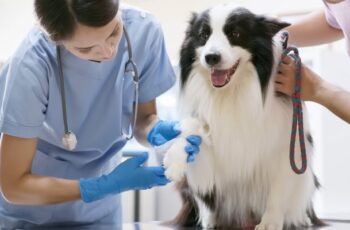For many of us, the food we put into our bodies is important. We know it’s more than just fuel, and we aim to create nutritious meals that are delicious and give us all the nutrients we need.
As we love our pets just as much as our families, it’s understandable that more and more pet owners are taking the same approach for their dogs. Cooking your dog a balanced meal instead of giving them processed dried or tinned dog food can be a great way to show your dog you care.
Also, homemade food, when done right and using a balanced selection of ingredients, can be more nutritious and tasty than some cheaper brands of dog food. While more expensive dog foods can deliver the same health benefits, you could save money by making your own dog food.
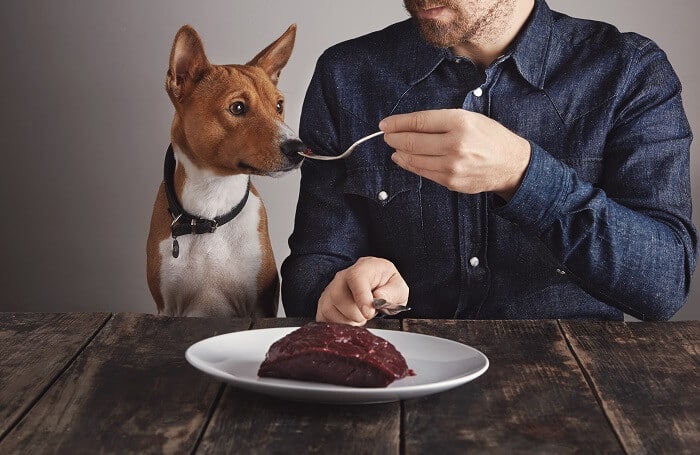
Many meals that dogs love are similar to the ones we eat ourselves, so you can easily make a second portion for your furry pal. That being said, you should remember that dogs can’t eat all the same foods as us and that they need variety in their diets to stay healthy.
Switching your dog to homemade food might be a challenging transition if your pet has ongoing health issues, so speak to your vet. Still, it can be a rewarding and fun experience, so if they’re happy with it, it can be worth giving it a go.
Below are some ideas and inspiration for homemade meals you can make for your four-legged friend to keep them healthy and happy.

Mixed Vegetables And Rice
Rice and vegetables are an easy meal that dogs love, and it’s easy to cook and store for a few days so you always have a tasty, fulfilling meal ready for your pet. Dogs can eat most veggies and rice as long as it is cooked correctly. When it comes to vegetables, you might have some questions. Can dogs eat peas? Can they have raw veggies, or is it just cooked ones? Usually, dogs are good with most vegetables, including peas and carrots, and can eat them raw or cooked. The experts at Native Pet have put together guides to help dog owners who want to understand dog nutrition and care, so if in doubt, check there first. You can then make a healthy and delicious meal using veg and rice. You can also add some meat if you feel like it.

Scrambled Eggs
Eggs are an ideal protein for dogs, but they can only be served to them fully cooked and without any oil, butter, spices, or seasonings. You can add lean meat of your choice or some lentils and grains for fiber. You can also add some veggies if you want to give your dog more variety. For older dogs that are struggling to chew, plain scrambled eggs can be a simple meal they can enjoy without too much strain. Scrambled eggs are really quick and easy, and they’re popular with humans, too, so as long as you leave one portion unseasoned you can share your breakfast with your beloved dog.
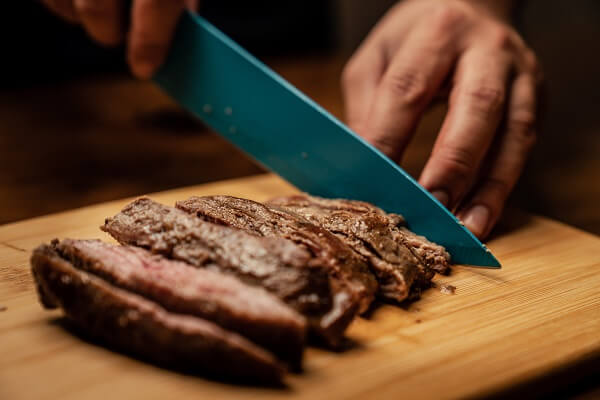
A Steak Dinner
If you have a very bougie dog, or you just eat a lot of beef yourself and want to share it with your canine best friend, then a simple, dog-approved steak dinner could be the perfect choice for you. Dogs can eat steak, but it should be cooked through and should be as lean as possible. For a balanced meal, you should add a mixture of steamed or boiled veggies and some boiled potatoes. You can moisten it with a little gravy if you make it from the juices from the beef and veggies, and don’t add any browning or artificial stock. Forget about elegant plating and mix up all the food to make it easier for your dog to eat. Your beloved pet can then live its best life with a delicious steak dinner.

A Simple Pasta Dish
Pasta is suitable for dogs in moderation and should be fed to them without any store-bought sauces, which contain a lot of additives. Instead, you should consider giving your pet a fresh selection of vegetables and meats along with their pasta. Pasta can be a simple way to bulk out a meal for your dog if you’re running low on inspiration- or time. After all, pasta is very easy to cook and doesn’t take long, so if you’re in a hurry and forgot to prepare your pet’s food ahead of time, pasta and a few fresh veggies, and some leftover meat could work well. For those who are better prepared, lean turkey mince or chicken breast can go well with pasta and be a delicious meal for your pet, so you could saute this for them alongside a selection of their favorite vegetables.
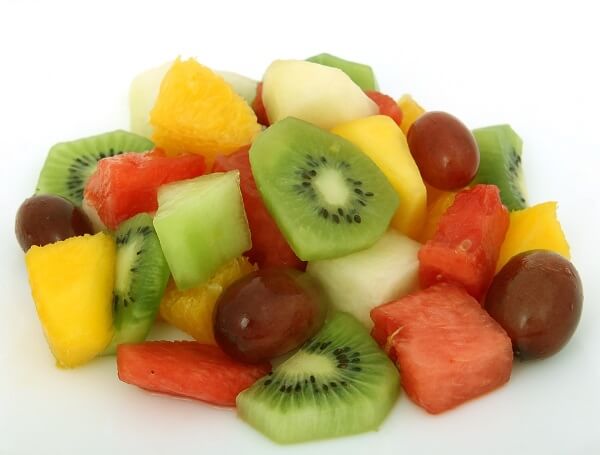
Fruit Salad
In the summer months, when it’s warm outside, a fruit salad can be a refreshing treat for your pup. Dogs can eat a variety of fruits, including oranges, melons, and mangos. One fruit to stay away from is grapes, as these are highly poisonous to dogs. If you want to share your fruit salad with your pet, make their version first, then add any grapes to your own once you’ve given them theirs. A fresh fruit salad can be a healthy and refreshing meal for your pet and give them something sweet to enjoy. If it’s very hot, you could blend up some leftover dog-friendly fruit salad and put it into popsicle molds for a delicious frozen treat. Dogs can eat frozen fruits, but you shouldn’t give them store-bought popsicles or ice creams unless they’re specifically for dogs, as human treats contain a lot of additives and extra ingredients. Even ice cream made specifically for dogs should only be an occasional treat, as it’s very fattening and usually doesn’t have much nutritional value.
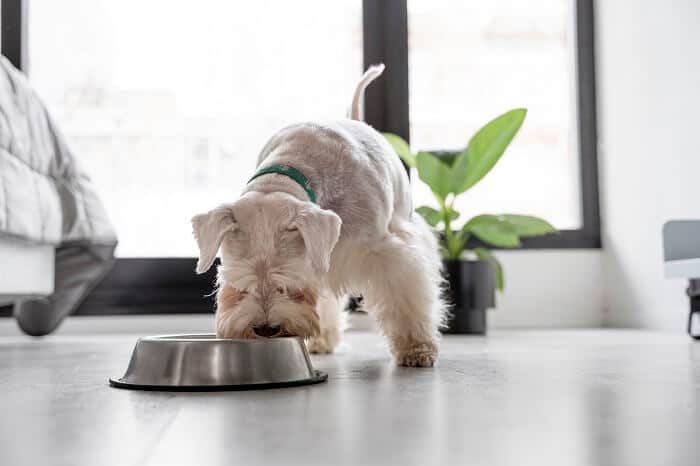
Transitioning From Store-Bought To Homemade Dog Food: Our Tips
If you’ve made the decision to make the switch and start feeding your dog homemade meals instead of processed dog food, then you need to make the change gradually.
It’s important that you don’t switch your dog’s food too quickly, as sudden changes to a dog’s diet can cause them harm and lead to potentially serious gastric issues.
So, when changing your pet’s diet, you should start by adding a little of their new food into their bowl and mixing it with their current food. Over time, you can start increasing the quantities of the new food and giving them less of the meal you want to stop feeding them.
Eventually, your dog will be used to the new food, and you can start giving it to them exclusively without their old processed food.
When making any drastic changes to your pet’s diet or lifestyle, you should consult your vet and monitor your dog for any changes in behavior or general health. If you notice any issues, be vigilant and take them straight to the vet.
You should also keep an eye on your dog’s weight and make sure that you’re not giving them too much or too little food. If you’re unsure about your pet’s diet or size, then your vet can give you some pointers that are tailored to their specific needs.
By being proactive, you can ensure that your dog enjoys their new homemade diet and that it gives them all the energy they need to have fun!


